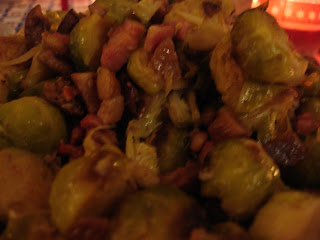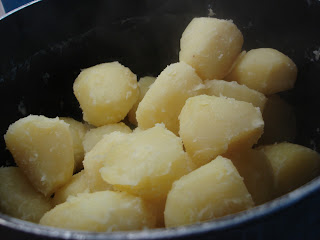I love bringing a little of my upbringing and heritage to my family table, especially when I think back to my childhood Christmas's. My mother would fill a 3 metre work surface with the most glorious food both of Swedish and English decent, it was a sight to behold. We always had a lot of seafood for our Christmas starter, this was usually pickled herring or gravad lax, each of which where heady with the smell and flavour of fresh dill.
 At family celebrations my mother would make the most terrific Smörgåstårta(a savoury sandwich cake with various fillings), covered with smoked salmon, fat juicy prawns, eggs, caviar the list goes on. I decided I wanted to bring all of those lovely flavours and elements to my family Christmas, so I made a mini Smörgåstårta, which was such a success I have made it three years running. It looks cheffy and complicated but it's really simple to make and looks really impressive. The things I like the most about it is that it's cold, so there is no stressing about getting it ready on time, I make the main component the night before and decorate it on the day. This makes three towers.
At family celebrations my mother would make the most terrific Smörgåstårta(a savoury sandwich cake with various fillings), covered with smoked salmon, fat juicy prawns, eggs, caviar the list goes on. I decided I wanted to bring all of those lovely flavours and elements to my family Christmas, so I made a mini Smörgåstårta, which was such a success I have made it three years running. It looks cheffy and complicated but it's really simple to make and looks really impressive. The things I like the most about it is that it's cold, so there is no stressing about getting it ready on time, I make the main component the night before and decorate it on the day. This makes three towers.
You will need:
For the Smörgåstårta:
 6 slices of gravad lax
6 slices of gravad lax4 tbsp of good quality mayonnaise
2 tsp of grated horseradish
3 tbsp of double cream
1 tsp of honey
1/4 tsp of salt
2 tbsp of dressed crab meat both white and brown
1 tbsp of chopped dill
2 tsp of chopped chives
75g of finely chopped and peeled apple
1 small gherkin (roughly 25g)finely chopped
50g of finely chopped smoked salmon
200g of shell on prawns (peeled and chopped)
To decorate each Smörgåstårta
3 large peel on crevettes (this is purely optional)
 2 soft boiled quails eggs (boil for 2 minutes and rest for thirty seconds, then cooled)
2 soft boiled quails eggs (boil for 2 minutes and rest for thirty seconds, then cooled)a sprig of dill
black caviar (easily available and very cheap)
Fresh salad leaves to sit under the tower
a slice of lemon
a quarter of an avocado
a few slices of red onion
a few slices of cucumber
a couple of north atlantic peel on prawns

To make the filling combine all of the filling ingredients into a bowl, apart from the slices of gravad lax. Using three muffin moulds of a muffin tin, oil them and line with clingfilm. Lay the slices of gravad lax onto the mould (two slices per Smörgåstårta) and push the salmon into it so that it creates a layer of salmon with no holes. Spoon in the filling and then pull up the excess sides of the cling film to cover the top. Refrigerate overnight. Place a few salad leaves into the centre of the plate and tip the seafood tower into the centre of the leaves, un mould the cling film off the mini Smörgåstårta and begin to decorate. It is purely optional how you dress the plate using the above listed decorations. See photograph for inspiration.













































